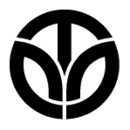Fukui Prefecture
| Fukui Prefecture | |||||||||
|
|||||||||
 |
|||||||||
| Capital | Fukui | ||||||||
| Region | Chūbu, Hokuriku | ||||||||
| Island | Honshū | ||||||||
| Governor | Issei Nishikawa | ||||||||
| Area (rank) | 4,188.99 km² (34th) | ||||||||
| - % water | 0.2% | ||||||||
| Population (2005) | |||||||||
| - Population | 821,589 (43rd) | ||||||||
| - Density | 198 /km² | ||||||||
| Districts | 7 | ||||||||
| Municipalities | 17 | ||||||||
| ISO 3166-2 | JP-18 | ||||||||
| Website | www.pref.fukui.jp/english/ | ||||||||
| Prefectural symbols | |||||||||
| - Flower | Narcissus (Narcissus tazetta) | ||||||||
| - Tree | Pine tree (Pinus) | ||||||||
| - Bird | Dusky thrush (Turdus naumanni) | ||||||||
| - Fish | |||||||||
 Symbol of Fukui Prefecture |
|||||||||
| Template ■ Discussion ■ WikiProject Japan | |||||||||




Fukui Prefecture (福井県 Fukui-ken) is a prefecture of Japan located in the Chūbu region on Honshū island. The capital is the city of Fukui.
Contents |
Prehistory
The Kitadani Dinosaur Quarry, on the Sugiyama River within the city limits of Katsuyama, has yielded the Fukuiraptor kitadaniensis and Fukuisaurus tetoriensis as well as an unnamed dromaeosaurid and a new sauropod. It also shows the coexistence of pterosaurs and birds, in the forms of comingled tracks.
History
Fukui originally consisted of the old provinces of Wakasa and Echizen, before the prefecture was formed in 1871.
During the Edo period, the daimyō of the region was surnamed Matsudaira, and was a descendant of Tokugawa Ieyasu.
Geography
The province faces the Sea of Japan, and has a western part (formerly Wakasa) which is a narrow plain between the mountains and the sea, and a larger eastern part (formerly Echizen) with wider plains including the capital and most of the population. The mountain side of the eastern part has much snow in winter.
Cities
Nine cities are located in Fukui Prefecture:
- Awara
- Echizen
- Fukui (capital)
- Katsuyama
- Obama
- Ōno
- Sabae
- Sakai
- Tsuruga
Towns and villages
Towns and villages in each district:
|
|
Mergers
Economy
- Sabae is known for producing 90% of Japan's domestically-made glasses.
- There are several nuclear power plants located along Wakasa Bay in Tsuruga which supply power to the Keihanshin metropolitan region.
Demographics
Culture
- Fukui is home to Maruoka Castle, the second oldest standing castle in Japan after Inuyama Castle. It was built in 1576.
- Eiheiji is a serene temple offering training and education to Buddhist monks. Founded by Dogen Zenji in 1244, Eiheiji is located on a plot of land of about 330,000 m².
- Many dinosaur fossils have been excavated in Fukui and they can been seen at the Fukui Prefectural Dinosaur Museum.
- Residents of Fukui Prefecture have a distinctive accent, Fukui-ben.
- Fukui has long been a center for papermaking in Japan (along with Kyoto). Its Echizen Papermaking Cooperative is a world-famous collection of papermakers making paper in the traditional Echizen style.
Tourism
- Eiheiji Temple
- Tōjinbō, a scenic piece of coastline, which is also a notorious spot for suicide.
- Echizen crabs are a local delicacy available year-round, though the crabbing season is during the winter.
- Another traditional sea-side Fukui dish is genge, a small guppy-like fish, that when eaten raw as sashimi, gives the body a brief tingling sensation.
- Awara is a famous onsen in the north of the prefecture.
External links
|
||||||||||||||
|
|||||||||||||||||||||||||||||||||
